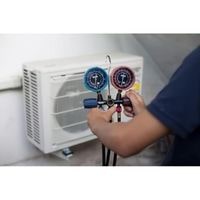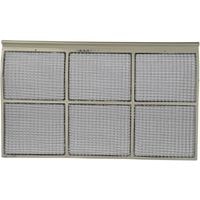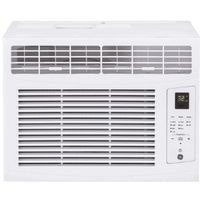Ge Air Conditioner Not Cooling. When your air conditioner suddenly stops working, this can cause an alarm or be something as simple as a blown fuse or tripped circuit breaker.
Air conditioning problems can require a professional technician to repair them, but sometimes homeowners can fix simple issues with very little troubleshooting.
We’ve put together the following troubleshooting guide to help address four of the most common problems you may encounter with your air conditioner including inadequate maintenance. Take a look and see how easy it is.
Ge Air Conditioner Not Cooling

When an air conditioner is not cooling properly it might be because either the filter of the unit is clogged or the coils are dirty.
If the filter of your AC is clogged, it will not be able to push out and circulate as much cool air through your home which means that you need to change it right away in order to save hours on cleaning up the blocked drain pipes and mold buildup if left unattended.
This article discusses some problems with Ge air conditioners that do not cool.
Problem With Main Control Board
The main control board is usually responsible for regulating the voltage to the compressor and the fan motor.
If the main control board fails, some components will no longer function properly or will cease to function altogether.
The main control board is a component that can malfunction due to overvoltage, so it’s important when detecting failures of these boards to check more commonly under-performing parts first before replacing the main control board.
Issue WithThermostat
Air conditioners use a thermostat to monitor and maintain the temperatures of the air inside. When the ambient temperature of the area rises above a set point, a switch is activated in order to power on the compressor and fan.
If your thermostat is shorting out, then you may not feel like you’re conditioning your space effectively. A quick way to check if this is happening is by using one of those handy multimeters we mentioned previously.
Symptom Of A Compressor
The compressor might be defective. Before replacing the compressor, be sure to check more commonly defective components particularly the overload protector and the compressor capacitor.
If it is determined that the compressor is indeed defective, then only a licensed technician should perform replacement as it could be dangerous for anyone unfamiliar with proper installation procedures.
Faulty Air Filter

If the air filter is clogged, the flow of air through the air conditioner won’t function properly.
This will significantly reduce the effectiveness of cooling your home or office.
Additionally, if the air can’t flow efficiently, frost may begin to form on the evaporator coils as a result of mildew/mold buildup in poor ventilation areas such as bathroom stalls and other congested living spaces.
To remove debris from your air filter, we recommend utilizing a vacuum cleaner to shake loose and empty excess dust that has settled inside its vents.
If you are unable to completely clean your AC unit’s air filter for any reason though, we highly recommend replacing it rather than waiting for further damage to occur.
Error In Running Capacitor
The run capacitor is connected to the compressor with electrical leads. If the run capacitor burns out, the compressor will not run.
To determine if the run capacitor is burned out, test the capacitor using a multimeter. This process can be undertaken by checking whether there is continuity when plugging in the leads to your multimeter and checking for voltage spikes as well.
Defective Thermistor
A thermistor is a part of the control board that detects air temperature. The resistance value between the thermistor and the heated bed changes in conjunction with the air temperature.
If you turn on the device and measure continuity between the thermistor, at first there will not be continuity.
If you increase or decrease the temperature to which it is exposed, this should change immediately and there should be continuity now.
Make sure your measurement doesn’t show readings of open circuit or short circuit across a fixed range while testing different temperatures; or if they do, replace the thermistor.
Control Board For Temperature
If the temperature control board is defective, then the fan and compressor will not receive power.
While a temperature control board may seem to be misdiagnosed often, make sure you check other air conditioner parts before replacing the temperature control board.
If all of the other items are in fact functioning correctly, then replace your faulty temperature control board.
Related Guides
